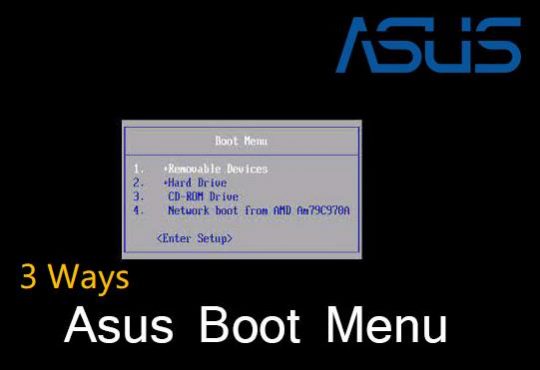Data Protection, Antiviruses and How Artificial Intelligence Will Shape the Future of Malware
Needless to say, the prospect of AI-driven systems will become brighter in the future. Artificial Intelligence will assist us in making decisions, power smart cars, cities, while unfortunately, it may also bring virus or malware to our devices.
That’s not a good news for the war against Cybersecurity. However, slow as the progress in safeguarding cybersecurity may seem to be, one can safely say that there has been a substantial improvement in the past few years. Many data security software companies have been continuously tweaking and improving their security features to deal with the available online and offline threats.
If data protection is of importance to you, frankly, you should check information about it.
A lot of antivirus companies are starting to adopt artificial intelligence mechanisms in their software development processes. Thus, understanding the concept of data protection within it is of great importance.
Data Protection, What is it?
Data protection encompasses the processes involved in safeguarding important information from compromise, corruption, or loss. As the amount of data being created and stored continues to grow at a super-fast speed, the importance of data protection also continues to grow.

Consequently, a more significant part of a data protection strategy is ensuring that data does not fall into the wrong hands. Protecting your data from compromise and ensuring that data can be quickly restored after corruption or loss are other crucial aspects of data protection.
Why is Data Protection Important?
Businesses frequently store vital pieces of information like employee records, loyalty schemes, customer details, and transaction history. There are third parties that might end up using that information for fraud and phishing scams. Therefore, those threats create a need for those pieces of information to be protected to prevent them from ending up in the wrong hands.
What Harm Can Be Done?
While most people may be unaware of other threats that are lingering out there, almost everyone who uses electronic devices knows about malware. Let look at how malware can compromise your devices:
- Damage or delete files
- Slow down the computer
- Reformat hard disk
- Cause data loss
- Frequent computer crashes
- Steal sensitive information
Malware can also stop you from performing any task on the computer or even accessing the internet.
AI in Malware
When we employ the term “AI-driven malware,” it’s relatively easy to picture a Terminator-style case of an AI “gone rogue.” In reality, a malicious AI-controlled program wouldn’t be deploying robots back through time; it would be a lot sneakier than that.
Malware can be altered by Artificial Intelligence to boost its effectiveness. This enables AI-driven malware to use its intelligence to attack computers faster or more efficiently. Traditional malware is usually a “dumb” program that follows pre-set code, while AI-driven malware can sort of think for itself.
Deeplocker Case
One of the scariest examples of AI-driven malware is Deeplocker, an IBM program that is elaborated in the form of proof-of-principle. DeepLocker is disguised as a teleconferencing software that could smuggle in a unique variant of WannaCry-a type of ransomware. Instead of instantly activating the payload, it would perform its duty as a teleconferencing program whilst it scans the faces of the people.
To mention the technical details, it is worth considering the technique used by Deeplocker and how it may affect the system or code to ask for ransom. First of all, the AI algorithms ensure that the backward engineering of Deeplocker is failed. How? The Deeplocker is locked until the program finds the payload utilizing the “triggers conditions” concept. It can move within the categories unless it finds the one mentioned in the formula.
A Deep Neural Network is essential there as it recognizes the specific path and defines the payload for the “conditions” concept to implement the intended message of the whole virus. The character of the technique plays a vital role here. In particular, the neural network with its “black box” principle hides the whole design. In particular, it covers the “who is an objective,” “what(file) is an objective,” and “how the objective is reached” elements of the attack.
In this regard, even an “if-else” condition lets the malware be flexible enough, especially under the “black box” principles of the malware. Besides, it deprives Deeplocker’s AI system of consistency. The possibility of change lets the malware find the target category or file irrespective of the number of the categories.
The very principle of “trigger conditions” is impregnable due to hidden structure and algorithms. After they find the necessary “admin data”, the algorithm launches the “message”: “Your files are blocked, kindly pay us ransom.” Now, the user or developer has all the blocked files blocked and wishes he or she had a whitelist or blacklist approach for security.
Deeplocker was designed to infect a specific individual’s computer, and as soon as it identifies the objective’s face, it would then deploy and execute the payload causing the person’s computer to be locked by WannaCry.
How to Defend Against AI-driven Malware
Independence from the developer
One theoretical use of AI in antimalware is creating an antivirus that is spontaneous in detecting and dealing with threats. This would be efficient enough due to some reasons. People who develop malware can engineer it in a way that allows it to “remember” every time an antivirus detects it. It can end up knowing what behaviors cause an antivirus to spot it. With that knowledge, it can effectively adjust its behavior and stop performing that action, which will allow it to find another way to infect the PC.
This is highly dangerous; most modern-day antivirus tends to run on predictable code. If a worm does figure out a way to avoid tripping the alarm, it will leave the antivirus software incompetent. It can also inform other malware about the defense’s weakness, allowing them to infect your devices easier.
An effective anti-AI-drive malware should, therefore, display a degree of independence and should not stick to predictable patterns of code. It should be able to think by itself and make different decisions each time it encounters threats without the developer broadcasting a new set of instructions.
How can an antimalware be independent?
Having spontaneous and unpredictable antimalware software can only be achieved through machine learning and AI. With machine learning, developers don’t need to code for all scenarios. When an AI antimalware faces an obstacle, it can try different methods from those previously used to overcome it.
How to Choose Antivirus Protection
AI-enabled malware can be a lot harder to detect. It is, therefore, more critical now than ever to pick the right antivirus software. Such malware can deliver more targeted options and create more convincing fake news and clickbait. By knowing how to choose the best antivirus protection, you will be able to cover some of your weak spots and patch them. Knowing the features of a good antivirus will allow you to choose the best protection tool and reinforce it.
First of all, let’s look at the types of threats that good antivirus software is supposed to defend for your device. Which threats can an antivirus be efficient to defend against? For users today, there’s a large number of issues to keep in mind. Some of the risks that you should be aware of include the following:
- Viruses: These are harmful pieces of software that replicate themselves intending to impact other tools and devices of the user.
- Adware and spyware: Usually appear within free software, such as games and screensavers; these forms of malware track your behavior and generate ads.
- Phishing: Seemingly authentic links that take you to malicious sites where the attackers will gather your personal data. You can find these within emails, ads, and websites.
- Pharming: These are a lot similar to phishing attacks; they redirect you from authentic sites to the ones having harmful intentions.
- Ransomware: This is a lot similar to kidnapping; the attacker tricks you into downloading software that will blocks access to your programs and files and programs until you pay a set fee
All these threats still exist, but there is a possibility that they are being made more potent by AI and machine learning. You should therefore pick an antivirus software provider that at least incorporates some AI technology within their products.
Features of Good Antivirus Software
While traditional malware detection is just binary: good or bad, you should focus more on an antivirus that performs anomaly detection. Anomaly detection can detect various threats at the same time, including configuration errors, insider threats, suspicious hardware failure, and network outages. It can also detect different things that are not necessarily malicious but anomalous.
One of the problems with AI-based anomaly disclosure is that if tuned too low, it’s not going to detect anything, and if tuned too high, it ends up catching everything, producing a lot of false positives. Good antivirus software should therefore overcome this hurdle and operate somewhere in the middle. You need a vendor that has been developing AI-based antimalware for a more extended period. Their software would have had a long time to learn and will, therefore, give fewer false positives.
Good antivirus software should also have the following features:
It should provide file-based protection
The security solution should be able to eradicate malware in files on a system to protect against worms, viruses, Trojans, spyware, adware, bots, and rootkits. You can liken these threats to a “NO FLY LIST,” where a file’s name and a signature of how it acts to compromise the system is known based on research on millions of threats. This will be an essential part of the security of your devices.
Reputation-based protection
An antivirus should be able to correlate tens of billions of linkages between files, users, and websites to identify rapidly mutating threats. By checking key file attributes, the software can accurately tell whether a file is bad or good and assign a reputation score. This will effectively protect against future attacks and reduce scan overhead.
Behavior-based protection
Good antivirus software should at least leverage artificial intelligence to offer zero-day protection. This is a behavior-based security layer that conclusively impedes the emergence of the new and unknown threats via scanning file behaviors as they execute in real-time to assess file risk.
Network threat analysis
Companies today use more network topologies that are not only complicated but also require network security resources to manage all transactions, communications, connections, and applications. AI can check all the network traffic to check suspicious activities and classify types of threats.
Bottom line
With the continuous development of IT infrastructure and the complexity and sophistication of technology, producing significant volumes of data on hundreds and thousands of devices, data protection is becoming more critical than ever. Almost every developing business is starting to employ new tools to enhance the operation effectiveness. All these new tools need protection, and antivirus software, among other security tools, can significantly help to mitigate some of the threats to data security.
More Articles:
How to Disable and Uninstall Avast on Windows 10
How to Configure Windows Defender on Windows 10
Stay Safe With The Top 7 Windows Antivirus Software Solutions Of 2020






